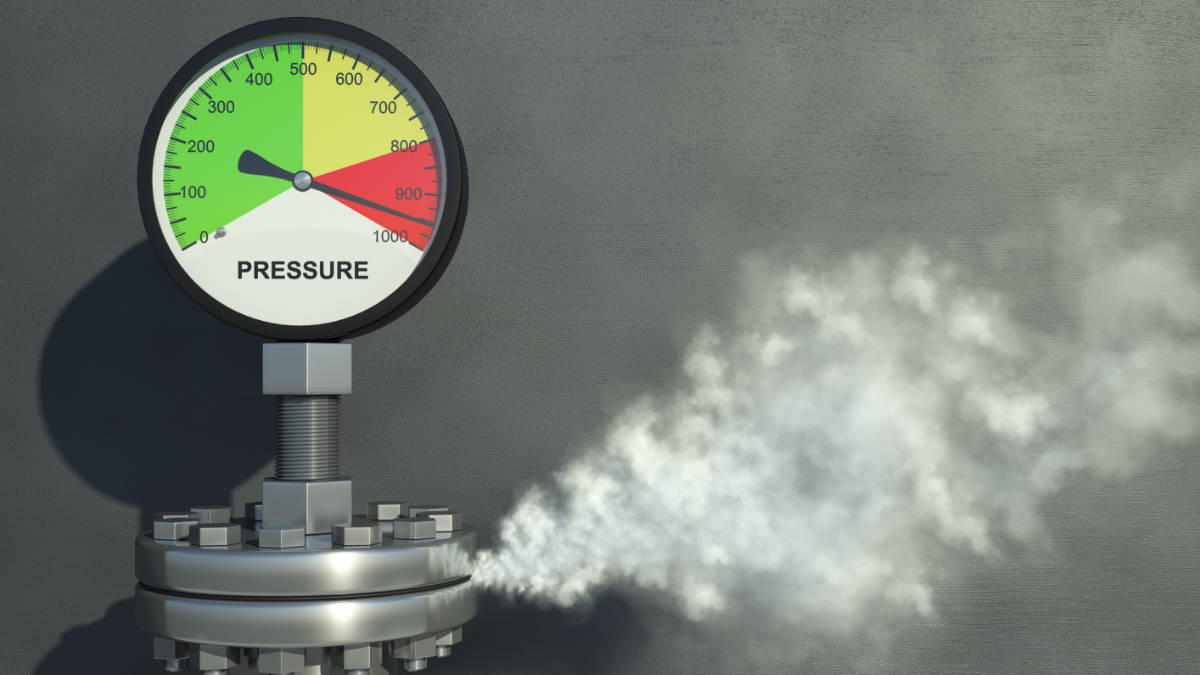Gas demand remains strong, and these ASX companies are poised to reap the rewards

Gas demand continues to put pressure on prices. Pic: mevans via Getty Images
Energy security had been a central theme in any economic calculations in recent years thanks in no small part to Russia’s invasion of Ukraine, which underscored just how vulnerable Europe was to having its gas supplies cut-off.
Gas prices that had averaged below €20 ($32.63) per megawatt hour (MWh) mark prior to 2021 climbed steadily past the €100/MWh level towards the end of 2021 and to beyond to a jaw dropping €335.42/MWh on 22 August 2022.
The rapid rise in gas prices led Europe to seek alternative sources of gas, snapping up any spare cargo of liquefied natural gas, which impacted on gas markets in North America and Asia, which rather incidentally had Australian LNG exporters wallowing in their record profits.
Things were certainly not helped by the realisation that there weren’t too many new mega gas discoveries being made to alleviate future gas demand, which is still going to be true for decades to come despite what the green lobby might have you believe.
While European gas prices have since fallen to below €35/MWh as storage sites hit about 77% capacity, S&P warned that concerns over Norwegian reliability and the potential for strong demand for LNG in Asia could see the market balance remain tight.
Gas demand on the subcontinent is expected to be slightly higher in the current quarter compared to the same period last year – though this is due to some relaxation of the purse strings in response to the lower price.
Adding to the pressure, US domestic consumption and export of natural gas in the US grew by 34.5 billion cubic feet per day, or 43%, from 2012 to 2022, due to weaker coal demand.
“Increased natural gas-fired electric power generation was the second-most significant factor in natural gas demand growth because of coal-to-gas switching and rising demand for air conditioning,” the Energy Information Administration noted.
Australian gas market in the balance
In Australia, the Australian Competition & Consumer Commission noted that the east coast gas market is expected to have enough supply to meet overall demand in 2024.
However, it notes that the outlook for winter this year and next is finely balanced, and the southern states will be reliant on Queensland’s surplus gas.
“The significant improvement in the supply and demand outlook for next year is largely due to a drop in the forecast demand for gas-fired electricity generation,” ACCC Commissioner Anna Brakey said.
“Weather and electricity market conditions have a strong influence on the amount of gas-fired generation we need in the energy mix, so the demand outlook remains somewhat uncertain.
“While the overall east coast is projected to have surplus gas next year, it is imperative that gas flows from Queensland to the southern states, and that there is enough storage for it.”
The ACCC also noted that there were fewer offers for supply in 2024 compared to previous years, despite contracts for next year not being subject to the price cap, saying that this could be due to a combination of factors, including seasonal slowdown and the industry’s response to regulatory uncertainty.
So, given that the demand for gas is as strong as it is – and with new supplies limited – these are some of the ASX companies that are well-positioned to benefit as a result.
ADX Energy (ASX:ADX)
While much of the company’s attention is on drilling and bringing its upcoming Anshof appraisal wells into production, ADX has no shortage of gas targets located right smack in the middle of Europe.
Top of its list is the major Welchau gas prospect in Upper Austria, which could host 651 Bcf of gas and 26 million barrels of condensate.
ADX plans to drill the Welchau-1 gas well in the current quarter and has already assessed the historical Molln-1 gas discovery as a potential appraisal candidate.
Ongoing technical work incorporating structural modelling, section balancing and field studies have also resulted in the generation of several new prospects as follow-ups to Welchau-1.
In addition, recent work has highlighted large stratigraphic upside potential at the three prospects with proven high permeability reservoirs – Schoe, Hoch and Gast, which could host best technical prospective resources of 6.6 billion cubic feet (Bcf), 4.8Bcf and 3.6Bcf respectively.
These targets are shallow to drill and quick to develop with the company looking to generate additional follow up prospects in this innovative new play-type.
Meanwhile, further analysis of analogous gas reservoirs in a nearby gas field have led ADX to significantly upgrade the expected possible net gas pay thickness at the IRR-1 prospect.
The company noted that the 3D seismic response at IRR-1 is similar to an adjacent gas field which has produced about 155Bcf of gas from Miocene deep water turbidite reservoirs that have proven flow capacity of up to 45 million standard cubic feet of gas per day.
Botala Energy (ASX:BTE)
Coal seam gas is the name of the game for Botala, which has been progressing its Serowe CBM project in Botswana since it listed on the ASX in July last year.
The company has already defined a best estimate (2C) Contingent Resource of 317Bcf of gas based on the five wells drilled to date, though this estimate does not include the more recent Serowe-6 and Serowe-7 exploration wells.
Botala is also currently flow testing the Serowe-3 well, where a visible gas presence has been noted while Serowe-7 is also being prepared for flow testing as part of its commercial pilot program.
Proving the ability of the field to produce commercial quantities of gas will allow the company to proceed with its ‘proof of concept’ Serowe Energy Hub – a 20MW hybrid power plant capable of delivering 10MW of dispatchable power through 10MW of solar power and 10MW of gas generation.
This will in turn pave the way for a large-scale downstream development.
Conrad Asia Energy (ASX:CRD)
Conrad has several gas assets across Indonesia though the cornerstone asset and likely first to be developed is the 413Bcf Mako gas field within the 76.5% owned Duyung production sharing contract (PSC) in Indonesia’s West Natuna Sea.
The reason is simple.
Besides the sizeable resource, the field benefits from easy access to existing infrastructure that is already connected and sending gas to Singapore and Malaysia.
Development costs are expected to be fairly low at US$275m and it is expected to be capable of generating gas sales of about US$4.5bn, or US$2.4bn net to the company after Indonesia government fiscal take.
This is only the beginning as the company also holds the Offshore North West Aceh (Meulaboh) and Offshore South West Aceh (Singkil) PSCs in Indonesia’s Aceh Province that have combined 2C Contingent Resources of 214Bcf of gas – 161Bcf of which is attributed to Conrad.
All the discoveries, which were made in the 1970s, were successfully flow tested at potentially commercial rates of almost pure methane – with very low levels of nitrogen and carbon dioxide – but were not previously developed due to low gas prices at that time.
Both PSCs also host several large structures in the deep water areas with identified gas chimneys and flat spots on seismic data – an indicator of potential hydrocarbons – that could host multi-trillion cubic feet of gas potential.
Empire Energy (ASX:EEG)
Empire is focused on developing its Beetaloo Basin assets where drilling has defined a significant 2C Contingent Resource of 1.5 trillion cubic feet of gas at its EP187 permit (the Carpentaria project).
Over 200 development well locations have been identified at the project targeting the Velkerri B and C shales only.
Work is currently focused on reaching a final investment decision for a pilot project this year that will be constructed in 2024. Success with this program will convert at least part of Contingent Resource into commercial Proved and Probable (2P) Reserves.
Carpentaria already has proven production capacity with the Carpentaria-2H flowing gas at a rate of 281 million standard cubic feet over 127 days.
The company is also appraising its Western Beetaloo project – an extensive play that covers a million acres (almost 10 times more than Carpentaria), which has been delineated by five spatially drilled wells and de-risked by activity at Carpentaria as they share the same source rock.
Hartshead Resources (ASX:HHR)
Over in the UK, Hartshead is progressing its UK Southern Gas Basin project towards a final investment decision on Phase 1, which is centred on the development of the Anning and Somerville gas fields that have combined 2P Reserves of 301.5Bcf.
Six production wells will be connected to two wireline-capable Normally Unmanned Installation platforms and from there to Shell’s infrastructure for onward transportation and processing for entry into the gas network.
Peak production is estimated to be about 140 million standard cubic feet per day, or 56MMcfd net to Hartshead, with first production expected in 2025.
FID is expected in the current quarter with project financing already secured through a farm-out with North Sea oil and gas producer RockRose Energy.
Phase 2 of the UK Southern Gas Basin project will involve the development of the Hodgkin and Lovelace fields, which host further 2C Contingent Resources totalling 139Bcf, while the third phase contains new exploration prospects in its inventory that currently hosts Prospective Resources of 344Bcf.
New Zealand Oil & Gas (ASX:NZO)
New Zealand Oil & Gas has both oil and gas production across New Zealand, Indonesia and Australia, delivering revenue of NZ$20.5m ($18.9m) in the March quarter.
Planning is underway to increase gas production at its Mereenie field in the Northern Territory, Australia, with a program of up to five wells already approved by the JV.
The company is also in the process of acquiring a 25% interest in L7 and EP 437 in the Perth Basin where work is underway to finalise the best targets for a three well program to begin in the first quarter of 2024.
L7 is close to the producing Waitsia gas field and the Lockyer Deep gas discovery.
Omega Oil & Gas (ASX:OMA)
Having recently completed drilling of its Canyon-1 and Canyon-2 wells to test the Permian Deep Gas play in southeast Queensland, Omega is now preparing to carry out fracture stimulation of the two wells before it starts an extended flow testing program.
Preliminary petrophysical analysis and cuttings have already proven that gas and petroleum liquids are present in the primary target Kianga Formation and in the secondary target, upper Back Creek Group.
Overpressure was also noted in both wells within the Kianga Formation and upper Back Creek Group – a key element in a successful basin-centred gas system.
Fracture stimulation – or fracking – involves the injection of special fluids into cracks to force them to open further, making gas (and oil) easier and cheaper to extract.
It is thus essential to get tight sandstone plays – such as the basin centred gas resource identified in the two Canyon wells – to flow gas at commercial rates.
Tamboran Resources (ASX:TBN)
Like Empire, Tamboran is a Beetaloo Basin-focused gas explorer with potentially massive resources.
A three well program is pending to delineate up to 17Tcf of 2C Contingent Resources across the ‘core’ region of its Beetaloo acreage.
Success will go a long way towards helping the company meet its goal of achieving gas production of more than 1.5Bcf per day by 2030.
Talon Energy (ASX:TPD)
With gas production from its 45% owned Walyering field expected later this quarter, Talon will soon have free cash flow (up to $30m per annum) to fund exploration on its Perth Basin and Mongolian gas assets.
Walyering has proven production capacity with both the Walyering-5 and 6 appraisal wells flowing gas at rates of 75 million standard cubic feet of gas per day (MMscf/d) and 35MMscf/d respectively, which is more than sufficient to meet the nameplate capacity of the gas plant.
Reserves of 54 petajoules provides for more than four years of production while the best estimate (2C) Contingent Resource of 32PJ and 2U Prospective Resource of 16PJ as well as other leads provide potential for further extensions to the field’s productive life.
Its other Perth Basin assets are the Condor field, an untested Jurassic-aged wet gas structure with 2U Prospective Resources of 408Bcf and 20.2 million barrels of condensate that is close to the DBNGP, the main pipeline in Western Australia, and a 25% interest in L7 and EP 437, where the JV plans to drill three exploration wells in 2024.
Over in Mongolia, the Gurvantes XXXV JV led by TMK Energy recently completed three pilot production wells and is currently working to complete pump installation and remaining surface facilities before starting the dewatering process required to get coal seams to flow gas.
Gas breakthrough is expected within one or two months of the wells being placed on pump.
Gurvantes XXXV currently has a best estimate (2C) Contingent Resource of 1.2 trillion cubic feet of gas, which while substantial covers just the Nariin Sukhait area that is the current subject of drilling, leaving some 99% of the 8,400km2 open for exploration to uncover more resources.
At Stockhead we tell it like it is. While ADX Energy, Botala Energy, Conrad Asia Energy, Hartshead Resources, Omega Oil & Gas and Talon Energy are Stockhead advertisers, they did not sponsor this article.
Related Topics

UNLOCK INSIGHTS
Discover the untold stories of emerging ASX stocks.
Daily news and expert analysis, it's free to subscribe.
By proceeding, you confirm you understand that we handle personal information in accordance with our Privacy Policy.








